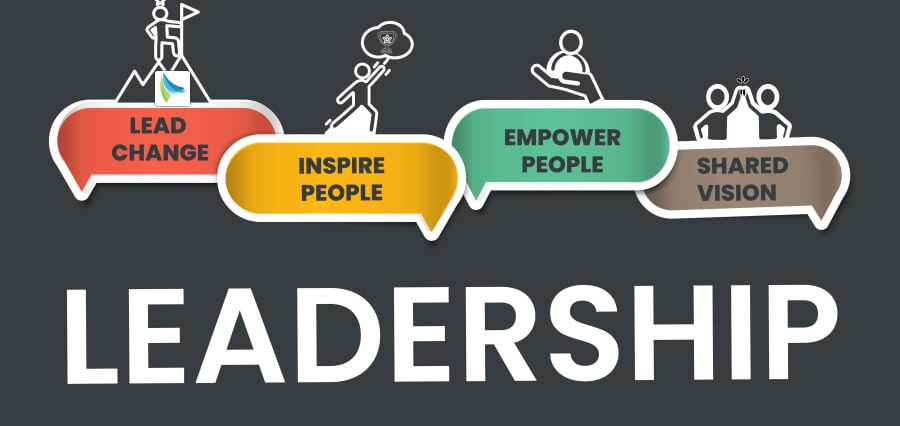Commanding Change with Compassion
In an era defined by disruption—technological, environmental, social, and economic—change is no longer a choice but unavoidable. But the leaders who are cutting through the noise, leading movements, and building lasting legacies aren’t just the ones with a clear vision or good strategic thinking. They’re the ones who lead with humanity.
Welcome to the era of human-centered leadership—a game-changing style that combines strength and sensitivity, innovation and fairness, and authority and authenticity. This new model of leadership is leading through change, not through coercion or threat, but through compassion—and in doing so, it’s reshaping success in boardrooms, institutions, and society as a whole.
The Rise of Human-Centered Leadership
The old leadership playbook—based on hierarchy, control, and metrics—was written for industrial-era efficiency, not for the nuances of our current world. Our world today requires leaders who can thrive in uncertainty, create connection, and establish cultures in which people flourish.
Human-centered leadership has four pillars:
- Empathy: Embracing the lived reality and emotional truth of others.
- Purpose: Grounding decision-making in values that go beyond profit.
- Authenticity: Leadership with honesty, openness, and a desire to learn.
- Empowerment: Building systems where every voice can be heard and every person can add valuable input.
This isn’t about abandoning performance—it’s about arriving there with trust, inclusion, and shared vision.
Compassion in Action: The New Competitive Advantage
Some of the world’s most admired leaders—be they business professionals, educators, public officials, or civil society activists—are showing the world that compassion is not a vulnerability. In fact, it’s becoming the greatest strength in high-pressure leadership.
Consider CEOs who’ve made mental health efforts a priority during times of turmoil, executives who’ve openly spoken out against social justice issues, or managers who’ve transformed work cultures to be more dynamic and well. These aren’t gestures for the sake of warmth—they’re business imperatives in an age where talent, trust, and transparency are no longer debatable.
Research bears it out: those companies with more empathetic leaders have higher engagement, lower turnover, improved innovation, and higher customer satisfaction. Compassion, in short, generates loyalty, drives resilience, and ignites creativity—all essential during times of extreme change.
Leading Change Without Leaving People Behind
Change is too often accompanied by disruption—and disruption, when not well managed, gives rise to fear. Human-centered leaders understand that lasting change involves emotional intelligence, not operations strategy.
Instead of imposing compliance, they construct collective buy-in through listening deeply, communicating openly, and valuing people’s concerns. They also know that the path to changing passes through people’s hearts and minds.
They also build psychologically safe cultures in which individuals feel empowered to challenge the status quo without fear of censure. Change is not imposed in such cultures—it’s co-created. This co-creative model guarantees that transformation is sustainable, inclusive, and consonant with the lived realities of those it affects.
Human-Centered Leadership in Society
The impact of compassionate leadership extends far beyond the organization. In government, NGOs, and social movements, human-oriented leaders are bringing systemic change—climate change, inequality, education, healthcare—using empathy-fueled innovation.
They understand that systems won’t shift until people do, and that people won’t shift without trust. These leaders listen to communities, amplify marginalized voices, and create policies for the greater good, not special interests.
Whether it’s a mayor speaking out for green cities, a school superintendent planning trauma-sensitive classrooms, or a tech entrepreneur developing ethical AI—empathy is the currency of credibility in public leadership.
The Balance: Strength and Sensitivity
Human-centered leadership is not soft leadership. It requires, in fact, more courage, honesty, and self-awareness than most traditional models. These leaders must confront uncomfortable truths, make tough choices, and stand firm in uncertainty—all while keeping themselves anchored in people’s humanity.
They don’t avoid responsibility or ambition—they redefine them. Success isn’t just about profits, rankings, or returns anymore. It’s also about the richness of relationships, depth of impact, and inclusiveness of progress.
This balance—between decisiveness and empathy, performance and meaning—is what distinguishes today’s best and most respected leaders.
Building a Culture of Human-Centered Leadership
In order to make this leadership model effective, it must be integrated into organizational DNA. That means:
- Reshaping leadership training programs to include emotional intelligence, active listening, and inclusive decision-making.
- Rewarding leaders for what they do, but also for how they lead.
- Creating feedback loops that track employee well-being, not only KPIs.
- Leading vulnerably at the top—because people trust leaders who are real, not flawless.
It also requires an adherence to diversity and representation—ensuring leadership teams reflect the communities and cultures they serve.
The Road Ahead: Compassion as a Catalyst
Since the world is getting more unstable, more uncertain, and more connected, the demand for empathetic leadership will only keep increasing. We need leaders who don’t merely get things accomplished, but inspire a sense of belonging. Who don’t merely act fast, but pause to listen. Who don’t merely endure change, but guide others through it with kindness.
Even as the unprecedented challenges come, compassion is not a soft skill—it’s a strategic superpower.
Because when people feel heard, valued, and cared for, they don’t just adapt to change—they become the change.
Read More: The Power of Purposeful Leadership: Inspiring Action, Driving Change, and Leading with Integrity











